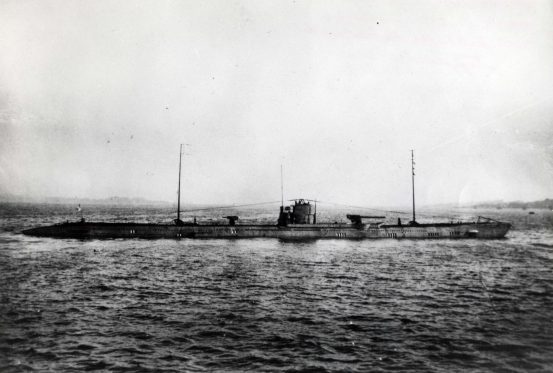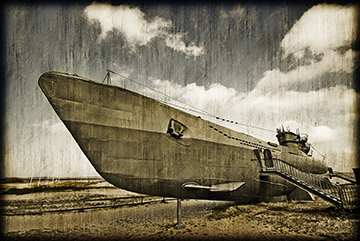When the War was at Our Doorstep
The history of the Outer Banks is filled with the tales of pirates and sea battles. But not all the battles fought off the coast of North Carolina were shrouded in the mists of history and legend. One of the most horrific battles of WWII was the Battle of the Atlantic, and North Carolina was on the front lines of that struggle.

What was held at stake was the very survival of Great Britain and quite possibly, the outcome of the war. In 1942 German U-Boats roamed at will along the Eastern seaboard, and North Carolina was one of their most fertile hunting grounds. That year, almost 80 allied ships went to a watery grave between Corolla and Cape Lookout.
There were a number of reasons for the carnage. U.S. high command had underestimated the capabilities of the U-Boats and overestimated the capacity of the German surface fleet. They kept the U.S. fleet ready to sail from Norfolk, VA in the event German battleships appeared on the horizon. Coastal blackouts were not ordered until the second half of 1942, leaving ships sailing along the coast silhouetted against the shoreline.
The typography of Cape Hatteras and Diamond Shoals protrudes into the Atlantic, which created a bottleneck as ships headed south. Unfortunately, this provided Nazi submarines with unprotected targets. March was the worst month of this year with an average of one ship a day sinking off the coast of North Carolina.
Desperate for a resolution, Fleet Admiral Ernest King ordered several defensive minefields be situated along the eastern seaboard. One of those minefields was placed at Cape Hatteras and formed an arc to the south end of Ocracoke Island.
According to Mitch Freitas, lead project researcher for the Maritime Heritage Program at the Coastal Studies Institute, quite a few mines were distributed. “Over 2,650 Mark VI contact mines were placed in an overlapping half-moon arrangement around Cape Hatteras with the intention of creating a safe harbor,” he noted. The Mark VI was a contact mine that was anchored to the sea bottom and when touched by a submarine it set off 300 pounds of TNT.
The strategy was to give Allied ships a safe haven within the arc, but these mines were not effective. No German submarines came in contact with a mine; however, three allied ships were lost. The F.W. Abrams, Chilore and Keshena sank within a one month period between June and July of 1942.

One problem may have been the need for secrecy about the minefield. Freitas points out that to be effective, the enemy must not know of its presence, which meant the Navy couldn’t tell Merchant Marines about the project. The area was marked as a danger area but ships’ captains did not understand the reason.
Eventually the U.S. Navy and Coast Guard took better control of the situation through better training and equipment for aerial patrols. The British loaned the United States 23 trawlers (converted fishing boats) with experienced crews for anti-submarine patrols. Ocean patrols became more aggressive and increased communications with air patrol units.
The navy did attempt to pick up the mines after the war, but their efforts fell well short of the goal. Records show 1,200 mines were retrieved which left over 1,300 mines unaccounted for. These missing mines do show up periodically. “Mines are still washing up on shores up and down the coast from various different eras,” Freitas said.
The minefield area is still marked as a hazard on navigation charts.
